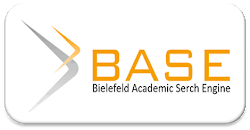Modal Sosial dalam Pengelolaan BUMG di Gampong Trieng Gadeng Aceh Timur
DOI:
https://doi.org/10.22373/jsai.v2i2.1452Keywords:
Social Capital, BUMG, South AcehAbstract
Social capital can be one of the factors or forces that support the empowerment process in the community. This article aims to describe the role and elements of forming social capital in the management of BUMG in Trieng Gadeng Village, Darul Aman District, East Aceh. The qualitative method used and data obtained from observations, interviews, and literature studies. The results of this study indicate that the types of social capital in the management of BUMG are bounding and linking. Geuchik as an actor, support both types of social capital. Geuchik's leadership can make the elements of social capital work effectively, such as building trust between various parties, running the BUMG program following local norms, and building social networks. So, the social capital plays a role as a driving force for the birth of cooperation between the government, BUMG managers, and the community in the success of the program set by BUMG in Trieng Gadeng Village, South Aceh.
References
Aisah, I. U., & Herdiansyah, H. (2020). Strategi Pemberdayaan Masyarakat dalam Pelaksanaan Program Desa Mandiri Energi. Share : Social Work Journal, 9(2). https://doi.org/10.24198/share.v9i2.21015
Dwiningrum, S. I. A. (2014). Modal Sosial dalam Pengembangan Pendidikan (Perspektif Teori dan Praktik). In UNY Press. http://marefateadyan.nashriyat.ir/node/150
Isti’anah, A., & Sutikno, S. (2018). Memaknai Peran Pondok Pesantren An-Nuqayah GulukGuluk dalam Pengentasan Kemiskinan di Pedesaan. FALAH: Jurnal Ekonomi Syariah, 3(1). https://doi.org/10.22219/jes.v3i1.5982
Mangkuprawira, S. (2016). Strategi Peningkatan Kapasitas Modal Sosial dan Kualitas Sumber Daya Manusia Pendamping Pembangunan Pertanian. Forum Penelitian Agro Ekonomi, 28(1). https://doi.org/10.21082/fae.v28n1.2010.19-34
Maulana, F. (2009). Pemanfaatan Modal Sosial Masyarakat Pada Program Pembangunan Gampong (PPG) Kecamatan Baktiya Barat Kabupaten Aceh Utara. Universitas Sumatera Utara.
Nurami, M. (2012). Peran Modal Sosial pada Pemberdayaan Ekonomi Masyarakat ( Studi pada Usaha Daur Ulang di Desa Kedungwonokerto , Kecamatan Prambon , Sidoarjo ). Jurnal Ilmiah Mahasiswa FEB UB, 1(2).
Putnam, R. D. (1993). Making Democracy Work: Civic Tradition In Modern Italy. Priceton University Press.
Putnam, R. D. (1995). Bowling Alone: America’s Declining Social Capital. Journal of Democracy, 6(1), 65–78. https://doi.org/10.1353/jod.1995.0002
Putnam, R. D. (2000). Bowling Alone: The Collapse and Revival of American Community. Simon and Schuster.
Santi, S. K. (2018). Peran Modal Sosial Dalam Pengelolaan Badan Usaha Milik Desa (BUMDES) di Desa Ponggok Kecamatan Polanharjo Kabupaten Klaten. Universitas Negeri Yogyakarta.
Siti Ikramatoun, Khairulyadi, & Riduan. (2020). Pemberdayaan Masyarakat melalui Pengelolaan Hutan Pinus di Kecamatan Linge Aceh Tengah. Jurnal Sosiologi Agama Indonesia (JSAI), 1(3), 238–249. https://doi.org/10.22373/jsai.v1i3.804
Subki, T. (2011). Social Capital Sebagai Strategi Pengembangan Madrasah. Universitas Negeri Yogyakarta.
Sugiyono. (2013). Metode Penelitian Pendidikan Pendekatan Kuantitatif, kualitatif, dan R&D. Alfabeta.
Sulaeman, E. S., Murti, B., & Waryana, W. (2015). Peran Kepemimpinan, Modal Sosial, Akses Informasi serta Petugas dan Fasilitator Kesehatan dalam Pemberdayaan Masyarakat Bidang Kesehatan. Kesmas: National Public Health Journal, 9(4). https://doi.org/10.21109/kesmas.v9i4.749
Syahra, R. (2003). Modal sosial: Konsep dan aplikasi. Jurnal Masyarakat Dan Budaya, 5(1), 1–22. http://www.jurnalmasyarakatdanbudaya.com/index.php/jmb/article/view/256
Usman, S. (2018). Modal Sosial. Pustaka Pelajar.
Zuhri, M. (2020). Penguatan Modal Sosial Kelembagaan dalam Penanggulangan Kemiskinan Perdesaan di Pantai Utara dan Pantai Selatan. Jurnal Litbang Provinsi Jawa Tengah, 18(1). https://doi.org/10.36762/jurnaljateng.v18i1.813
Downloads
Published
How to Cite
Issue
Section
License
- Authors retain copyright and grant the journal right of first publication with the work simultaneously licensed under an Attribution-NonCommercial-ShareAlike 4.0 International (CC BY-NC-SA 4.0) that allows others to share the work with an acknowledgment of the work's authorship and initial publication in this journal.
- Authors are able to enter into separate, additional contractual arrangements for the non-exclusive distribution of the journal's published version of the work (e.g., post it to an institutional repository or publish it in a book), with an acknowledgment of its initial publication in this journal.
- Authors are permitted and encouraged to post their work online (e.g., in institutional repositories or on their website) prior to and during the submission process, as it can lead to productive exchanges, as well as earlier and greater citation of published work.














